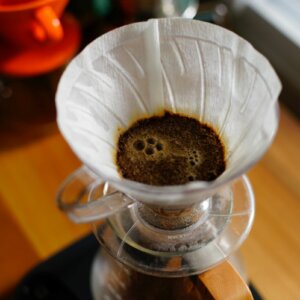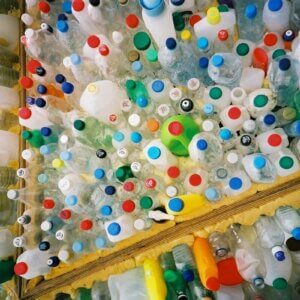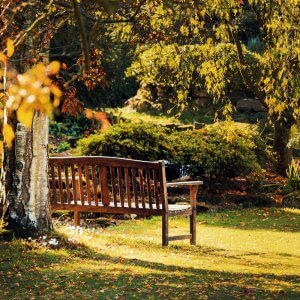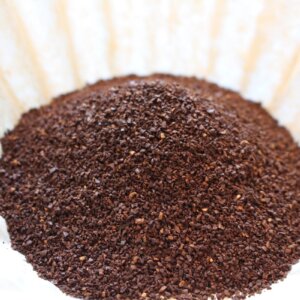Table of Contents
Cheese is tricky to compost due to composting risks associated with dairy: pest problems, slow decomposition, and unpleasant odors. Similar to other animal products, cheese scraps have fats and oils, making their surface water-resistant and slower to decompose.
However, under the right conditions and with proper composting techniques, cheese can provide nitrogen to your bin or pile. Cheeses should be balanced with dry fibrous materials to offset their innate moisture.

Apart from composting, there are other environmentally-friendly alternatives you can consider before sending your cheese scraps to landfills. Try adding leftover cheese rinds the next time you cook soups, pastas, or risottos at home.
How to Compost Cheese
Although cheese is compostable, most composters and environmental institutions like the Environmental Protection Agency (EPA) highly discourage the inclusion of cheese and other dairy products in traditional home compost piles. This exclusion is due to cheese’s animal, fat, and moisture content, which attract pests, slow down the composting process, and trigger anaerobic decomposition.
Cottage cheese, regular cheese, and vegan cheese can be composted.
Some cheesecloths are also compostable, as long as they are made of plant-based fibers such as cotton, hemp, and linen.
Beeswax- and soybean-based cheese wax are fine to compost, but avoid cheese wax coated with paraffin or other petroleum-based sources. Toxins from these can harm your composting microorganisms and remain in the finished compost.
Successful composting of cheese requires proper preparation, optimal composting conditions, and suitable composting techniques.
Preparing Cheese for Composting
Remove any nonbiodegradable packaging, tags, or stickers from your compostable cheese. Avoid including foil or plastic wraps as they will not biodegrade with the rest of your organic matter.
Before incorporating cheese into your compost heap, chop or grate it to accelerate the decomposition. Doing this step will also help prevent anaerobic decomposition.
Mix your cheese pieces with carbon-rich brown materials: dried leaves, parched grass clippings, shredded unbleached cardboard, untreated sawdust, and wood chips. Be careful not to fill your compost bin or pile with too much cheese to avoid unpleasant odors and other risks.
For the best compost quality, strive for optimal composting conditions.
Optimal Composting Conditions for Cheese
When processing cheese into compost, build your compost system in a sunny area. Sunlight can help minimize the moisture that comes with dairy products like cheese. Bury your cheese pieces deep in the center of your compost bin or pile. Avoid large chunks of cheese as they break down slower.
Treat your leftover cheese as a nitrogen-rich green ingredient. Aim for a balanced mix of organic matter. The ideal carbon to nitrogen ratio is 25 to 30 parts brown materials for every 1 part of green materials. The nitrogen in cheese scraps aid with the microbial development and growth in the pile.
As your organic materials break down, dairy products release a liquid known as leachate. This substance increases moisture levels in your compost pile, so keep a watchful eye on it.
Anaerobic conditions and foul smells occur in compost piles that are overly moist and turned infrequently. To remedy such conditions, add more carbon materials and regularly turn the pile to improve airflow. Oxygen plays an essential role in decomposing organic waste and helps heat up the compost pile.
The pile should reach the optimal temperature range between 90 and 140 degrees Fahrenheit. These temperatures are sufficient to efficiently and quickly break down cheese.
Sustain these optimal conditions when handling cheese wastes.
How Long Does Cheese Take to Compost?
In a well-managed compost pile, cheese can turn into nutrient-rich compost anywhere from 3 to 5 months. The rate of decomposition depends on the availability of air, heat, and moisture. To further increase the pile’s efficiency, maintain a balanced mix of brown and green materials.
How Cheese Affects the Composting Process
As a complex compost material, cheese has a great impact on your composting process. The nitrogen content in cheese scraps promotes robust microbial growth.
Impact on Decomposition
Animal fat and other oils create a water-resistant coating on cheese, slowing down the decomposition. By correctly preparing your cheese scraps, and mixing them with brown materials, you can accelerate their decomposition rate.
Microbial Activity
Due to its nitrogen content, cheese enhances microbial development within your compost bin or pile. Remember to regularly turn your compost pile for aeration and keep it moist (but not flooded) to hinder the growth of anaerobic bacteria.
If your compost begins to smell like ammonia, add more carbon-rich brown materials that will absorb any excess liquids.
Temperature and Moisture
The continuous activity of composting microorganisms raises the internal temperature of your compost pile. High temperatures speed up the breakdown of cheese scraps. Maintain a temperature between 90 and 140 degrees Fahrenheit in hot compost piles.
Cheese scraps contain some moisture, so it’s best to combine them with brown materials. This step helps prevent your compost pile from getting too wet. Regularly turning organic waste improves airflow, which reduces liquids and further raises its temperature.
Potential Issues With Composting Cheese
Inclusion of cheese in traditional home compost piles is associated with issues on decomposition, pest problems, and pungent smells. These problems are the primary reason
Will Composting Cheese Attract Pests?
As cheese decomposes, they naturally emit smells that attract unwanted pests like cockroaches, houseflies, and rodents. These unwelcome guests can disrupt your composting process. To reduce this risk, bury your cheese scraps in the bottom center of your compost heap. This precautionary step helps mask potential odors and makes the cheese harder to access.
Consider securing a lid on your compost bin or placing a sheet of board over the open pile for added protection.
Will Composting Cheese Cause Odors?
Composting cheese causes putrid odors within the pile due to its high fat content and protein. Too much moisture can worsen this issue, prompting anaerobic decomposition. To counter this, add carbon materials such as shredded dead leaves, untreated sawdust, or wood chips.
Methods for Composting Cheese
Certain composting methods are better at processing cheese than others. Understand the effect of cheese on each method and learn how to enhance the efficiency of your composting process below.
Hot Composting
Cheese is suitable for hot composting. Intense temperatures in hot piles can diminish risks in composting cheese. However, it requires more effort to maintain. Regular turning and temperature checks are crucial to transform cheese and other organic materials into nutrient-rich compost. Maintain the pile’s internal temperature between 90 and 140 degrees Fahrenheit using a long-stemmed compost thermometer.
Keep your ingredients balanced and maintain optimal compost conditions to stimulate healthy microbial activity.
In small quantities, bury your cheese pieces at the center of your hot compost pile or compost bin. Intense heat at the compost’s core can break down cheese faster.
Cold Composting
Cold composting cheese can attract pests and produce unpleasant smells. Additionally, the lack of intense heat can lead to bacterial growth from decomposing cheese.
Avoid cold composting cheese and explore other methods instead.
Vermicomposting
Adding cheese scraps into your worm bin should be done with caution. Some vermicomposters discourage cheese due to the fat and oil content that can possibly harm valuable worms. Furthermore, decomposing cheese emits pungent odors.
Red Worm Composting noticed that his vermicomposting worms had no interest in cheese, but other insects like beetles, and mites consumed it.
In contrast, other vermicomposters see no harm in feeding your worm farm with cheese as long as it’s kept at a minimum.
Start by slowly introducing small cheese pieces to the worms’ diet, monitoring how they respond as the cheese decomposes. For a healthier community of worms, provide other food sources including carbon-rich worm beddings of dried leaves, coconut coir, or shredded unbleached paper.
Vermicomposting primarily relies on worms as the resulting castings are a nutrient-rich soil amendment for garden use.
Bokashi Composting
Cheese is most suitable for Bokashi composting. This method employs a special inoculant to transform food scraps into useful compost. The fermentation process is anaerobic, occurring inside an airtight Bokashi container. Microbes from the bran feast on carbs and proteins to ferment unconventional kitchen wastes like dairy and meat.
Once sealed, the Bokashi container locks in strong odors and keeps pests out of your compost.
Alternatives to Composting Cheese
If a home compost isn’t available, consider other sustainable options when handling cheese.
Industrial Composting of Cheese
Large-scale commercial composting facilities operate at high temperatures hot enough to safely process cheese. Under these conditions in properly managed facilities, composting risks in cheese are greatly minimized. This option is an excellent alternative to home composting as it can handle unconventional composting ingredients.
Contact your nearest commercial facility to learn how they accept such waste. Curbside pick-up and drop-off options are available in most of these centers.
Upcycling Cheese
Make your cooking activities more sustainable by upcycling excess food waste. Leftover cheese can be used in countless recipes at home. For instance, cheese rinds from Camembert, Grana Padano, or Parmigiano-Reggiano, etc., can add distinct flavors in pasta, risotto, and soup dishes.
Leftover Cheese for Soups
Homemade broth can be elevated with the addition of leftover cheese. Simply add edible cheese scraps to a pot of water and your preferred herbs, meats, and vegetables. Cheese elevates your broth with creamy and salty notes.
Parmesan broth requires bay leaves, carrots, celery, mushrooms, onions, parsley, and thyme. The resulting broth is perfect for pasta sauces and soups.
Leftover Cheese for Pastas
Thicken your pasta sauce by integrating leftover cheese pieces. The classic mix of basil leaves, cheese, and tomatoes is a great base for most pasta dishes.
Leftover Cheese for Risotto
As your risotto broth simmer, sprinkle your leftover cheese until they completely melt. The scraps will accentuate creamy, and salty hints in your rice. Other herbs that work well with cheese in risotto include bay leaves, rosemary, and thyme.
Feeding Cheese to Chickens and Livestock
As a general rule, cheese shouldn’t make up your livestock’s entire diet. Provide other diverse food sources to boost their health.
Chickens can eat minimal amounts of cheese, but avoid feeding them American cheese, cheese spreads, cheese sticks, or any other highly processed cheeses. These types offer little to no nutrition for your chickens.
When feeding chickens with cheese, cut the cheese into small pieces to prevent choking. Chickens can consume blue cheese, brie, cheddar, cottage cheese, cream cheese, goat cheese, gouda, and mozzarella.
Feed your cats and dogs cheese scraps moderately. Because cheese contains fat and protein, it can cause your pets to become overweight. Avoid giving cheese to any pets with dairy allergies or lactose intolerance.
Another thing to keep in mind when feeding cheese is its salt content. Pigs will enjoy small amounts of cheese pieces in their feed. On the other hand, shred cheese scraps — especially hard cheeses — before feeding them to ducks.
Disposal Options for Cheese
If none of these options are feasible, collect your cheese scraps and throw them in a suitable garbage bin.
To keep out animals, seal the cheese scraps in a nonbiodegradable bag.
What Cheese Shouldn’t Be Composted?
Exclude highly processed cheese or cheese products with synthetic additives from your compost heap. These substances include preservatives that can hinder the efficient decomposition process within your compost.
Handle moldy cheese with utmost care due to the harmful effects of mycotoxins on animal, human, and plant health.
Safety and Precautions When Composting Cheese
Before handling moldy cheese, be sure to wear gloves and a face mask, particularly if you have immune or respiratory issues.
To convert cheese into healthy compost efficiently and safely, strive for ideal composting conditions. Always keep your cheese compost out of the reach of pets and children to avoid health risks.
Once you’re done with composting, make sure to wash your hands thoroughly with soap and running water.
FAQ
Why can’t dairy go into your compost pile?
Dairy products are linked to problematic pests, pungent smells, and slow decomposition. Many composters and environmental institutions discourage the inclusion of dairy in traditional home compost, unless you’re doing a Bokashi compost.
Is cheese biodegradable?
Derived from animals, cheese is an organic product that is biodegradable. When left alone in the open, cheese decomposes naturally with the help of elemental conditions and microorganisms.
Will composting cheese attract mice and rats?
Yes, inclusion of cheese in your compost pile will attract critters like mice and rats. Secure your bin with a sheet or board to prevent these uninvited pests from infesting the organic materials.









































Leave a Reply